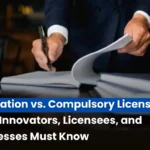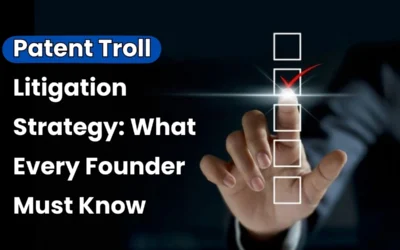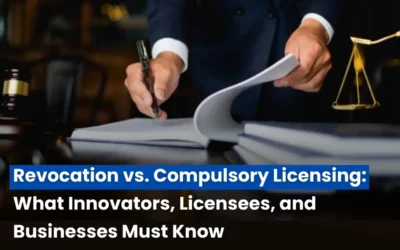
Patent monetization is often seen as a straightforward way to make money from your intellectual property, but in reality, it’s far more complex. Many investors, startups, or business owners—especially those new to the patent monetization fundamentals and its process—end up making common mistakes that lead to undervalued deals or even failed negotiations. This isn’t unusual; it happens to both first-timers and seasoned players. There are several key factors you need to understand and keep in mind before monetizing your patent to ensure you secure the best possible outcome. If you want to learn what those are and how to avoid costly mistakes while doing Patent Monetization in India, keep reading.
What Are the Patent Monetization Fundamentals?
To understand the patent monetization fundamentals, it’s important to first be clear about patent monetization in India—the process of using patents to generate revenue. This can be done through licensing, pooling, selling, litigation, and more. But successful monetization requires grasping a few key fundamentals:
- Check Market Worth: First, everyone should study demand, identify competitors, and measure the true value of your patent.
- Secure Your Rights: Second, make sure your patent is strong, enforceable, and protected in major regions. Because a valid, enforceable patent carries a higher value.
- Match Business Goals: Choose the right patent monetization method that supports your revenue and growth plans.
- Monetization Models: Choose wisely among licensing, sales, enforcement, and pools.
- Market Demand & Timing: Patents tied to relevant, high-demand technologies monetize best.
- Strategy & Negotiation: Deals must be done according to the long-term goals and avoid undervaluation.
What Mistakes Do Beginners Make in the Patent Monetization Process?
As beginners, it’s natural for inventors or investors to make mistakes, especially when dealing with patent monetization, which is a complex and multi-stage process. However, knowing these common pitfalls in advance can significantly reduce the chances of error, and you can achieve the benefits of patent monetization. In India, there are several mistakes that new innovators or businesses often make while going through the patent monetization process, such as:
- Some rush into deals without properly valuing their patents, ending up with agreements far below their worth.
- Others fail to protect and enforce their rights, leaving room for competitors to exploit their innovations.
- A frequent error is not aligning monetization with long-term business goals, which can lead to short-term gains but long-term setbacks.
- Many also overlook market research and jump in without knowing whether there’s real demand for their technology.
- Finally, poor negotiation strategies—such as agreeing to unfavorable licensing terms—often leave significant money on the table.
Read Also: Apple Patent Monetization Case Study: How IP Increases Market Dominance
Why Are Fundamentals Important in the Patent Monetization Process?
When it comes to patent monetization, fundamentals are not just concepts—they act as the building blocks of the process. To ensure the journey from patent to profit is smooth and effective, here are the essentials you must keep in mind:
- Patent Audit: Review your portfolio and focus on patents that are valid, broad, and enforceable. Weak patents won’t monetize well.
- Valuation: Assess cost, market, and income potential. Correct valuation ensures you don’t undervalue or overprice your patent.
- Market Research: Identify demand, competitors, and industries where your patent solves real problems. A strong market fit raises value.
- Protection Check: Confirm your patent is enforceable and filed in key regions. Strong protection makes it attractive to buyers or licensees.
- Choose Monetization Model: Decide whether to license, sell, enforce, or pool. Pick the model that aligns with your long-term business goals.
- Approach Potential Partners: Reach out to companies, startups, or investors who can benefit directly from your innovation.
- Negotiation & Deal: Structuring Secure, favorable agreements with fair royalties, exclusivity, and duration. Strong negotiation avoids undervaluation.
- Execution & Monitoring: Finalize deals, track compliance, and enforce rights. Monitoring ensures long-term benefits from your patent.
Conclusion
Patent monetization fundamentals may seem complex, but with the right fundamentals—strong protection, proper valuation, market awareness, and smart strategy—the process becomes much smoother and more rewarding. By combining these essentials with a structured approach, inventors and businesses can unlock the true value of their innovations and turn ideas into profitable assets.
Read Also: The Rise of Indian Startups Using Patent Monetization to Attract Investors









